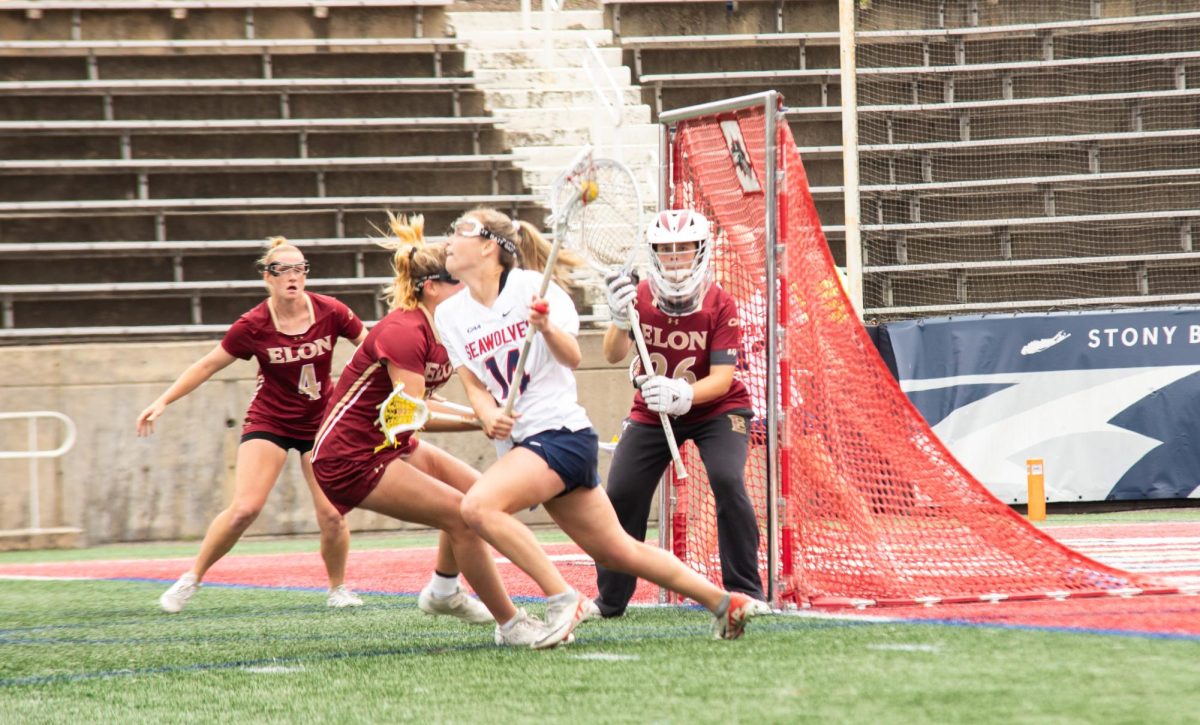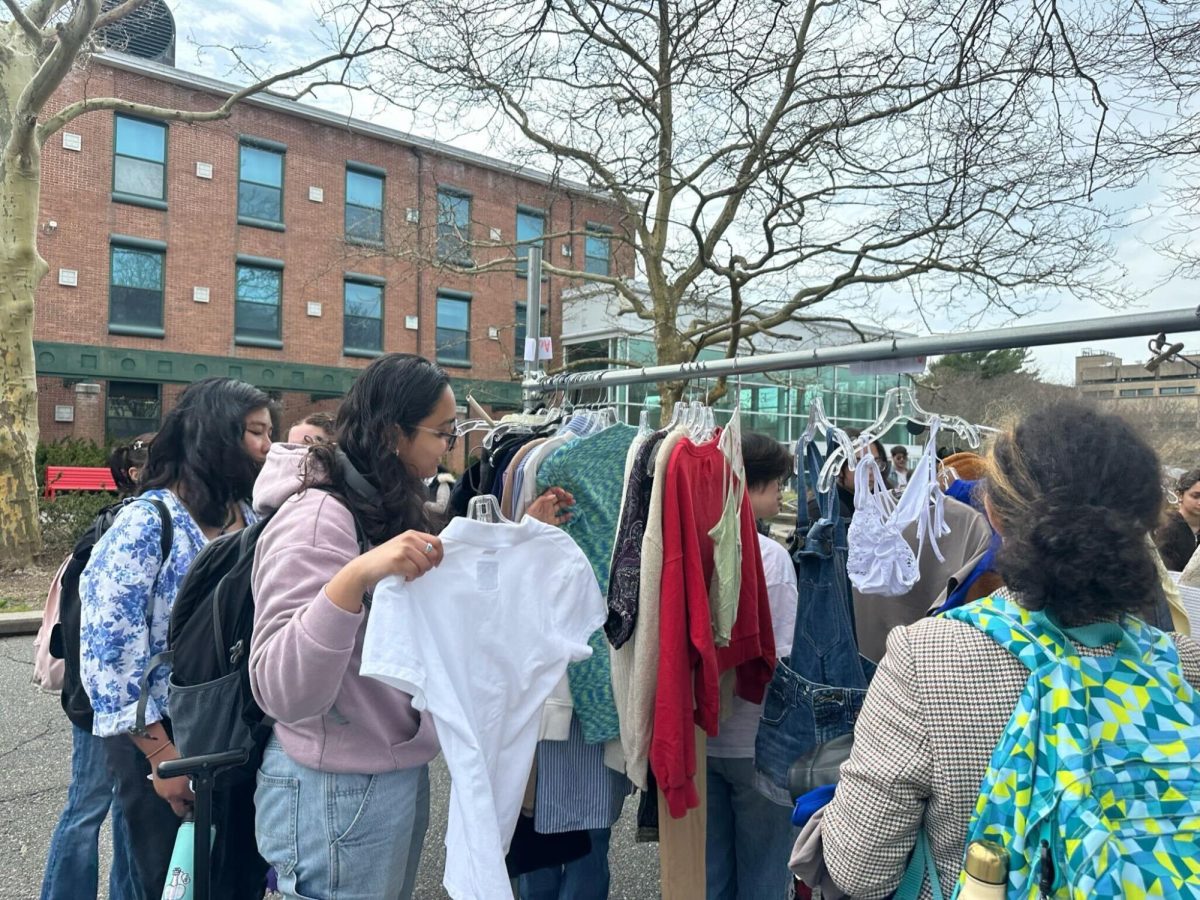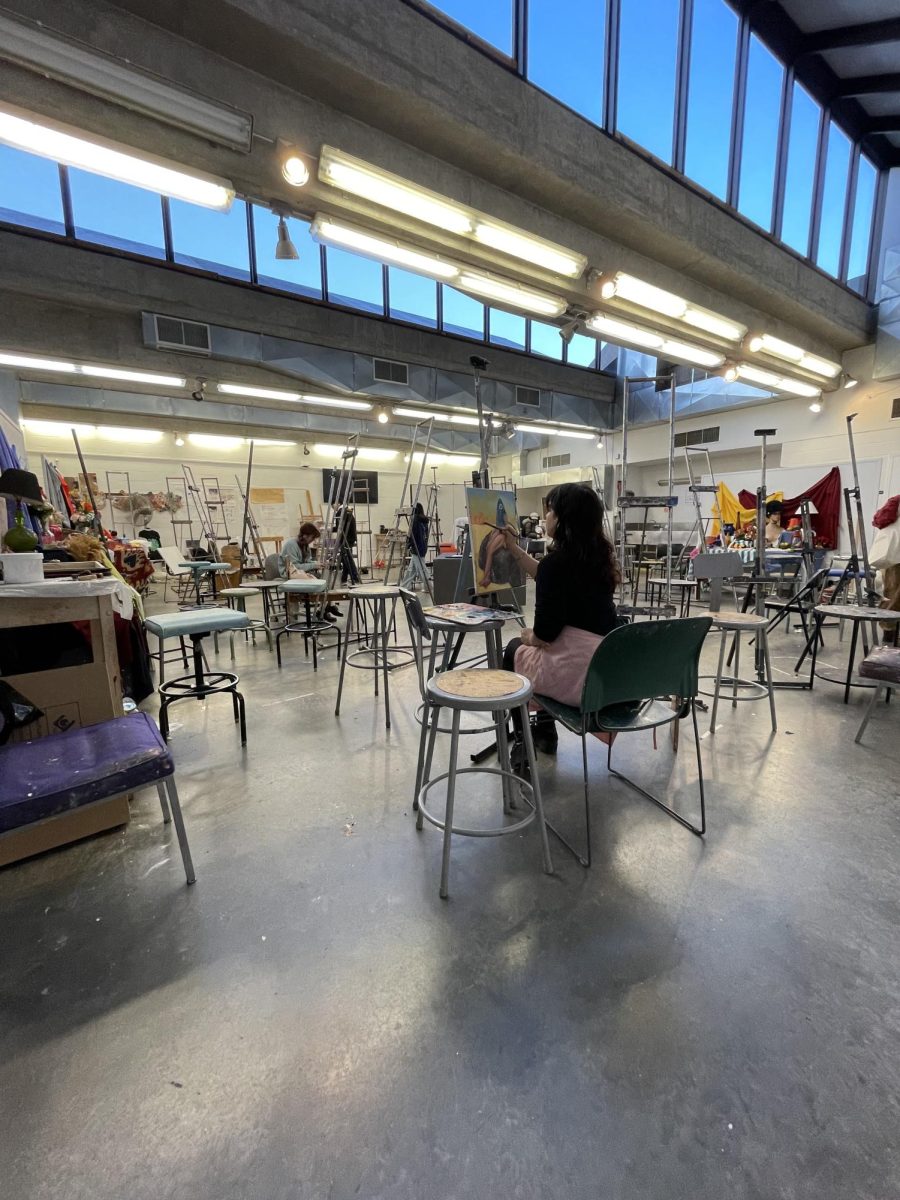
Cheap burger joints abound in Astor Place, mere steps away from one another. For most, these establishments are nothing more than quick bites, but for multimedia artist Vita Kari, it’s home to the beginnings of their artistic journey. Kari, who uses they/them pronouns, has found a unique connection to these places.
Kari publicly performed their “Burger as Body” presentation on Feb. 12 in two locations. From 3 p.m. to 3:30 p.m., the performance was held outside the Starrett-Lehigh Building, a hub for New York Fashion Week events, and from 4 p.m. to 6 p.m., it was at the Astor Cube.
“It’s full circle for me,” Kari said in an interview. “I started at [New York University]. So, I spent a lot of time here, eating cheap burgers to fuel me. It had to be here.”
Kari’s performance symbolized the online act of bodily consumption by both creators and viewers. This was portrayed through Kari devouring burgers attached to their arms, while also offering a bite to the audience. Although some were aghast at the offer, others eagerly took a bite from the stale sandwiches. Kari contorted their body, tearing into the patty’s flesh, invoking a sense of eerie discomfort that washed over audience members, entrancing all who beheld Kari’s mesmerizing display.
Adding to the immersive experience, a black burger truck loomed nearby, dispensing free burgers to onlookers. This replication of internet consumption underscored the pervasive nature of digital interactions, where consumption becomes not only an act of indulgence but also one of participation in a communal narrative of desire and gratification.
“I want to make sure that as viewers, we are aware of [the] consumption of the body, [particularly] the queer body,” Kari said. “Being in the middle of the viral storm, you are consumed and replicated, simulacra, especially as a trend.”
The term “viral storm,” coined by Kari, pertains to the cultural standards and values that determine the images deemed worthy of going viral on social media. Through their work, they blur the lines between the digital and physical realms, from public displays like “Burger as Body” and “Trapped in a Can” to their paintings and video art such as “Virality as Form,” focusing on the commodification of the body through a queer lens.
“One’s body and personhood can get lost for a moment,” Kari said. “It’s interesting to take it back. So something that is hyper-personal like taking care of your grandmother and going through her clothing brings together this uniquely intimate moment of impersonal or advertisement and then bringing it to the hyper-personal.”
In their “Burger as Body” presentation, Kari donned an ornately crafted foam burger headpiece adorned with designs inspired by her deceased grandmother’s clothing. By intertwining a personal narrative, they encourage open discussions, addressing topics such as the disillusionment of caretaking roles and generational legacies.
Kari’s production extends beyond mere discourse. They aim to redefine hyper-femininity, brazenly challenging the stereotypical expectations that dictate one’s appearance based on gender identity or sexual orientation.
“I tend to think a lot about the ‘bimbofication’ of the era we are in and how it plays into the queer lens,” Kari said. “For a lot of my life, I presented very masc[uline] because I felt that I needed to [be] as a queer person. But, now I am presenting as a high-fem, realizing that we can perform however we want.”
Kari’s “Burger as Body” serves as an introduction to the solo exhibition of their Master of Fine Arts thesis at Otis College of Art and Design. The exhibition will feature a marriage ceremony of Kari marrying their digital self and will open on March 28.
“Audience participation is so important to me right now,” Kari said. “I love the thrill of it and the conversations that could be had and really be able to push the narrative that way. For me [and my work], it’s been, ‘what am I trying to do and which medium is going to get me there?’”
Through their meticulous deployment of multimedia, such as sculptures, paintings, video art and public performances, Kari successfully interacts with the power dynamics of virality and tension between authenticity and arbitrary cultural constructs. Their work elicits profound introspection and invites crucial societal dialogue in the digital age.
“If anybody looking at [my] work feels seen in any way and if we’re thinking about any of the same things,” Kari said. “I would love to make anyone feel heard.”
























